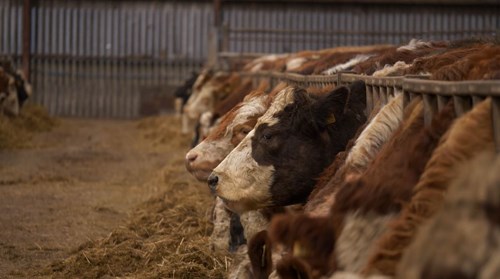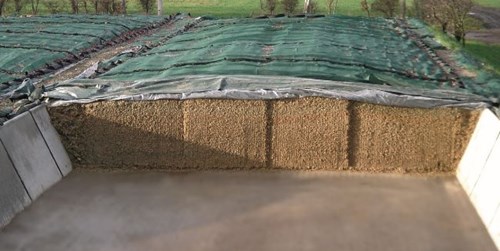Have You Carried Out Your Winter Feed Stocktake?

After a long summer of battling with the weather, feed budgeting should be at the forefront of everyone’s mind as we head into the winter. Poor weather has resulted in lower silage yields and many animals being housed early due to lack of grass growth and constant wet conditions underfoot. Therefore, feed budgeting is an essential task to check if forage available on farm is going to meet livestock demands throughout winter and to help identify shortages which can be prepared for now.
Analysing Forage
Six weeks after pitting or baling a crop, a forage sample should be analysed to get an indication of the dry matter content and nutritional value for the feed budget. This is especially important this year to help assess silage spoilage from soil contamination caused by cutting swards low to increase yield due to little grass growth. Silage spoilage often leads to Listeria (bacteria found in soil which multiplies within silage, having adverse health effects on livestock). A high ‘ash’ content within a silage analysis indicates high soil levels within forage.
Livestock Demands
The table below highlights predicted total dry matter intake of cattle throughout production as a percentage of bodyweight, to covert to fresh weight as fed divide by the dry matter percentage of the ration.

Creating a Feed Budget
Silage Clamp Calculation:
- Determine the volume of the pit: pit length x pit breadth x pit height to get the pit volume (m3). Remember to add a ramp if applicable ((l×b×h)/2).
- Calculate the available fresh weight: volume x density / 1000 to get FW (kg).
- Calculate the dry matter: FW (kg) x DM (%) / 100.
- Work out the livestock demand: the number of stock x DM consumption x feed days.
- Finally determine any shortages or surpluses: DM available – DM demand.
Silage Bale Calculation:
- Calculate the available fresh weight: number of bales x bale weight (kg) to get total FW (kg).
- Calculate the dry matter: FW (kg) × DM (%) / 100.
- Work out the livestock demand: the number of stock x DM consumption x feed days.
- Finally determine any shortages or surpluses: DM available – DM demand.
Dealing with Shortages
In previous years, forage shortages could be overcome by extending the grazing season or cutting more silage. However, that has not been an option for many this year. Instead, forward buying feed supplements could be a solution after a discussion with a trusted nutritionist, this will also help avoid price fluctuations by purchasing feed earlier in the season. Furthermore, consider lowering your livestock demand by culling out unproductive animals – cows that aren’t in-calf, stock not meeting performance targets or taking advantage of the strong store trade instead of finishing cattle.

5 Top Tips:
- Analyse forage to get a better understanding of the nutritional value of your feed on farm.
- Download the Farm Advisory Service (FAS) Companion App to help carry out feed budget calculations.
- Weigh multiple bales to determine a representative average bale weight. Use a mixer wagon with calibrated weight scales or run some bales over a weigh bridge.
- Re-do forage budgets mid-season to ensure you are still on track or to determine if alterations will need made.
- Consult with a nutritionist.
Rachel Baillie, Agricultural Technician, Rachel.Baillie@sac.co.uk

Unearthed is the exclusive SAC Consulting members' monthly newsletter. Unearthed offers insights and tips from our experts on what we think is in store for farming and crofting in the coming months in order to protect and enhance your business.
Posted by Unearthed News on 18/11/2024
